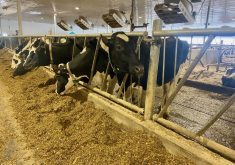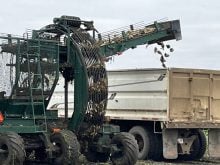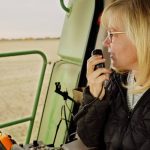All is quiet in prairie kitchens six years after Bernardin Ltd. sparked a protest with its decision to stop making lids to fit the Gem line of glass canning jars.
The clamour from those who canned led Bernardin and a Canadian competitor to each offer to start manufacturing the lids again. Now the lids are plentiful, says longtime canner Marla Rauser, who lives on a small farm north of Lloydminster, Sask.
Rauser’s protest of Bernardin’s decision prompted the corporate reversal after 6,300 canners signed an on-line petition claiming they owned 1,069,099 Gem jars that would become useless.
Read Also

Accurate accounting, inventory records are important
Maintaining detailed accounting and inventory records is not just a best practice; it’s a critical component of financial health, operational efficiency and compliance with programs like AgriStability.
This month Rauser has started her annual processing of fruit, vegetables and meats. She fills 500 to 1,000 quart sealers each year to feed her five children, her husband and herself.
“Last year I did 500 jars of syrup. We go through a quart of syrup each day.”
She cans the meat from the family’s chicken flock, as well as wild chokecherries, tomatoes and pickles from her garden, berries and vegetables from the local farmers’ market and organic fruit she buys from British Columbia.
Rauser said she has never been ill from food she has canned, although she remembers one bout of sickness after she ate tomatoes canned by someone else.
“I learned to can with my mom and my grandmother. I actively started canning when I got married 20 years ago,” she said.
“For us it’s a lifestyle choice.”
Rauser likes to serve food she grew. She said she’s confident it’s healthful because she knows what went into it. Also, canning saves space because she already has four large freezers that hold organic butter, oatmeal, wheat and flax that must be frozen to prevent it from spoiling.
Her food philosophy is to grow or buy locally and organic, which besides the health benefits is also more economical.
She plants three gardens with vines and corn in one patch, potatoes in another and the carrots, peas, beans, carrots and lettuce in the third.
“I plant a garden as soon as snow leaves. It was May 2 this year. As soon as I can see black, I’ll get my boots on and go into the mud to plant.”
Her two teenagers are more into flower gardens now, but the 11, seven and four year olds all have their own vegetable crops and are interested in canning.
“Canning is something you can’t learn from a book. You have to work with someone,” she said.
“It’s a handed-down art. I say to my kids, ‘we do this for fun but our grandparents did it to survive.’ “
Rauser said it’s a scary commentary on society that she knows no one her age, 48, who cans. It is generally hot and sweaty work done in the 30 C temperatures of late August.
“It’s time consuming, messy and labour intensive. People have to want to have a reason to do it, such as health or curiosity or to pass on traditional knowledge. I will can until my last breath.”














